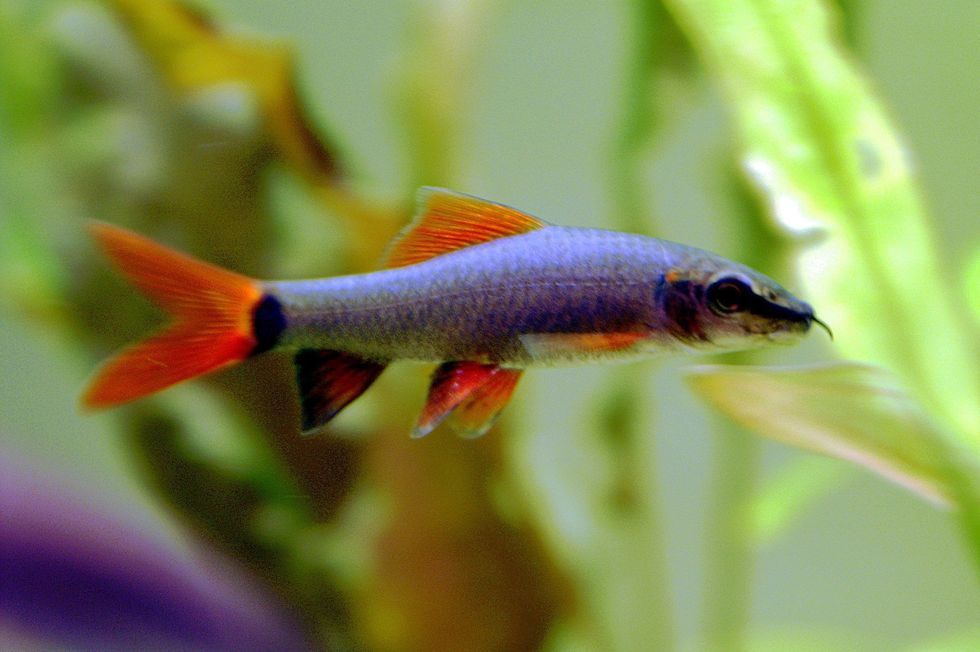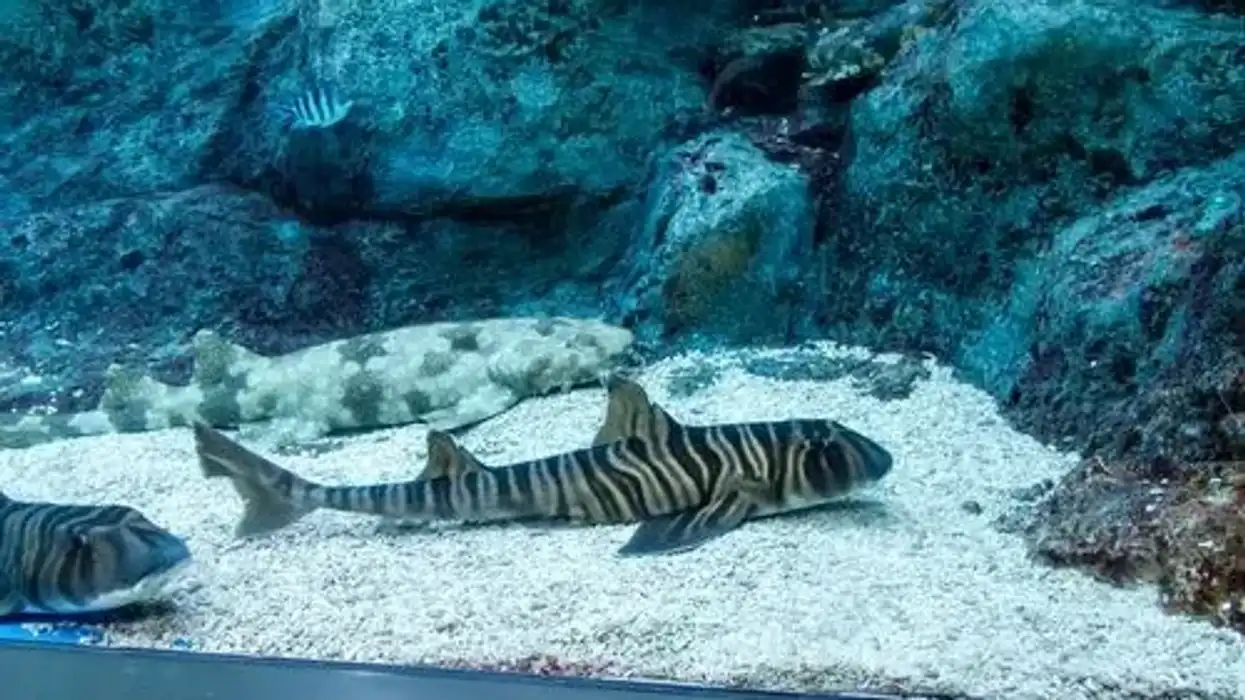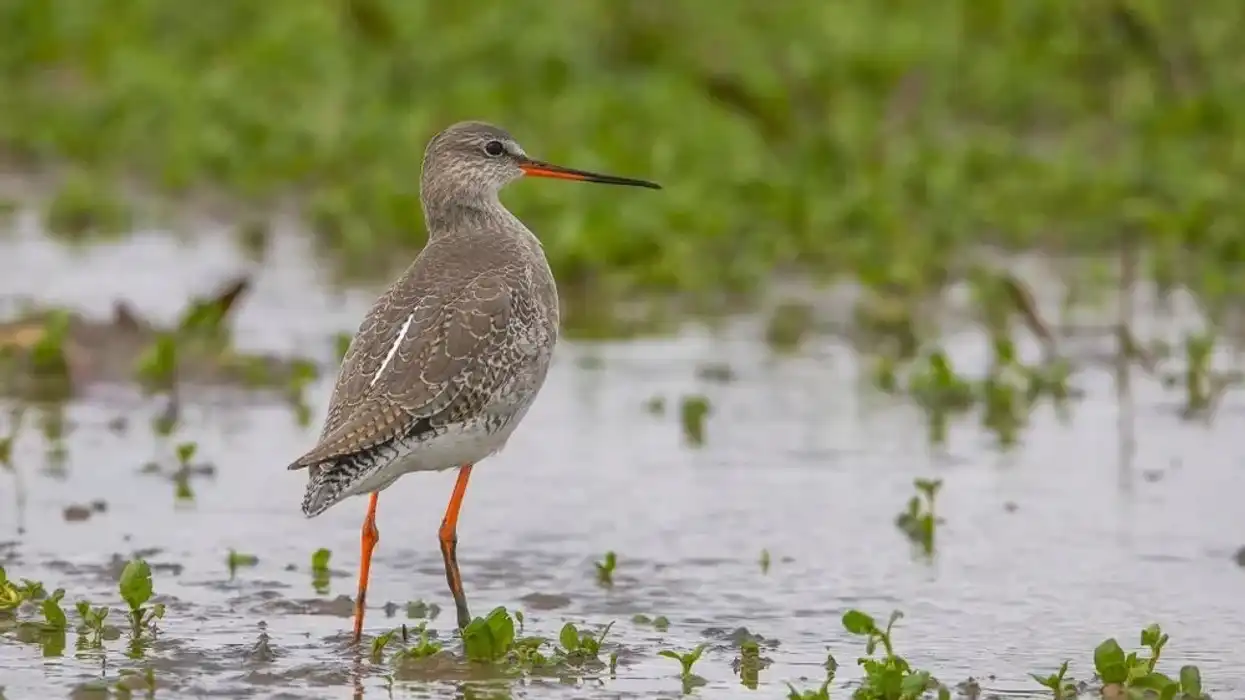Rainbow sharks (Epalzeorhynchos frenatus) are natural inhabitants of Southeast Asia. But don't confuse yourself with the word 'shark'.
They are not real 'sharks' but have a similar attitude in the water. They are a small tank fish species that are very beautiful in real. Rainbow sharks are also called ruby shark, green fringelip labeo, whitetail sharkminnow, albino rainbow shark, red-finned shark, whitefin shark, rainbow sharkminnow, and red-fin shark.
They are mostly kept in a big fish aquarium tank with space of up to 75 gal (283.9 l). They are free swimming fishes that are generally found near the bottom.
They roam near the rock bed in search of food particles. Rainbow sharks are omnivorous in nature and eat basically everything. They eat phytoplankton, zooplankton, algae, shrimps, larvae, insects, fallen food particles, and leaves like spinach and lettuce.
It is better to keep them with fishes that are either bigger or similar in size. If kept with smaller fishes, they can show their aggressive side and can cause harm to them.
This was just the introduction. Ahead in the article we have prepared lots of interesting and funny facts about this tank shark. You will be amazed for sure!
For more similar articles, read our rockfish facts and milkfish facts for kids.
Rainbow Shark Interesting Facts
What type of animal is a rainbow shark?
Albino rainbow sharks are a freshwater, free swimming fish species that live in Southeast Asia.
What class of animal does a rainbow shark belong to?
The albino rainbow shark belongs to the class Actinopterygii, the class of ray finned fish species. They belong to the order Cypriniformes and family Cyprinidae. Their genus is Epalzeorhynchos and their scientific name is Epalzeorhynchos frenatus. They are famous as an aquarium fish species, rather than as catfishes or real sharks.
How many rainbow sharks are there in the world?
The albino rainbow shark (Epalzeorhynchos frenatus) is a semi-aggressive small fish that inhabits the freshwater bodies of Southeast Asia. They inhabit their habitat in adequate numbers and counting them in numbers sounds impossible. They are considered as a species of Least Concern.
Where does a rainbow shark live?
Rainbow sharks are a freshwater fish species that inhabit the freshwater bodies of Southeast Asia. They live in flowing water bodies like rivers and streams and are generally found near the sandy base which is where they get their food supplies. Albino rainbow sharks also live in an aquarium.
What is a rainbow shark's habitat?
The albino rainbow shark is a semi-aggressive species that lives in the rivers and streams of Southeast Asia. They live near the sandy base and search for food. They were found in the basins of Mekong, Chao Phraya, Xe Bangfai and Maeklong situated in Indochina.
Who do rainbow sharks live with?
Rainbow sharks are freshwater fish and are semi-aggressive in nature. Rainbow sharks are extremely social and happily live in groups in their natural habitat. While keeping them in an aquarium, do not forget to add more similar species as their tank mates. A single rainbow shark (Epalzeorhynchos frenatus) in aquarium may feel lonely which can affect its health.
How long does a rainbow shark live?
Rainbow sharks enjoy a lifespan range of around five to eight years. Both in the wild and in captivity, they live for five to eight years. To cheer them up and keep them happy, introduce more rainbow sharks as their tank mates.
How do they reproduce?
Rainbow sharks are free-swimming fishes found in the rivers and streams of Southeast Asia. They are very small in size and agile in nature.
Their breeding is done in a cool to moderate water temperature. Rainbow sharks are moody breeders and it takes an experienced aquarist to ensure breeding. Breeding rainbow sharks requires a huge gallon tank.
While adding water to the tank, all the impurities should be filtered out and the water acidity should be maintained. It should be around a 75 gal (283.9 l) tank and should be decorated nicely with gravels and plants.
Before introducing the breeding pair, ensure that both of them are sexually mature. Breeding may take a long time so it is important to be patient.
They possess an aggressive behavior so you need to inspect that they are not harming each other. If this happens, the pair should be separated and new pair should be introduced. After breeding, it is better to remove the parents from the fry tank.
Do not keep a filter in a fry tank as it can suck the fry and kill them. After some time, the fry can be seen swimming in the free water.
What is their conservation status?
According to the IUCN Red List, the rainbow shark falls under the conservation category of Least Concern. They inhabit Southeastern Asia in good numbers and their population is thriving well.
Rainbow Shark Fun Facts
What do rainbow sharks look like?
The average rainbow shark size is small and they inhabit the freshwater rivers and streams of Southeast Asia. They are territorial, semi-aggressive fish that can be found near the bottom of their habitat.
The rainbow shark, also called the ruby shark, is a small torpedo-shaped fish species that has a glossy and vibrant colored body. They are very agile in nature and show a clumsy behavior.
Their 6 in (15.2 cm) elongated body shows a mixture of black, dark blue, and bright blue color. They have small fins on their body.
Their dorsal fin is shifted a bit backward and this fish has big ventral fins, namely pectoral and pelvic fins. All their fins have an orangish appearance. Their tail is bigger than all the other fins.
Rainbow sharks show sexual dimorphism where the males thinner than females and are more vibrant in appearance. Their red fins have black lines in them.
Rainbow sharks grow to a maximum length range of 6 in (15.2 cm) with a negligible amount of weight. Their red fins and their bright appearance make them one of a kind.

How cute are they?
Rainbow sharks are bright-colored small tank fish that are a bit aggressive in nature. Still, they are very cute and good-looking in nature. Rainbow shark tank size should be around 75 gal (283.9 l) and rainbow shark tank mates should be chosen carefully.
How do they communicate?
Rainbow sharks are a tank fish species that are a bit aggressive in nature. They are a fish species and cannot communicate through vocalization. Instead, they use body language to convey their thoughts. Fishes have a lateral line segment organ to detect even the minute disturbance that happens in water.
How big is a rainbow shark?
Rainbow sharks are very small in size. They have a torpedo-shaped elongated body that has vibrant colors on them. They inhabit the freshwater bodies of Southeast Asia and also live in tanks. They have a maximum body length of 6 in (15.2 cm) and their body weight is negligible.
How fast can a rainbow shark swim?
Rainbow sharks are very agile in nature. They are bottom dwellers that can be found near the bed searching for food supplies. There is no exact measurement available of their swimming speed. We can assume that they have great speed in the water.
How much does a rainbow shark weigh?
Rainbow sharks live in flowing rivers and streams. They also live in tanks with a tank size of around 75 gal (283.9 l). They are small free-swimming fish that grow to a length of 6 in (15.2 cm) with a negligible amount of weight. They live in moderate water temperature and enjoy an omnivorous diet.
What are the male and female names of the species?
There are no names assigned to the males and females of this free swimming fish species. They are commonly known as rainbow sharks.The rainbow shark species shows sexual dimorphism where the males are a bit thinner than the females. Males possess brighter colors with black lines on their fins.
What would you call a baby rainbow shark?
Like all other baby fishes, baby rainbow sharks are also called fry or young ones.
What do they eat?
Rainbow sharks enjoy an omnivorous diet. They are a bottom-dwelling fish species that can be seen feeding on foods like insect larvae, tubifex worms, periphyton, crustaceans, phytoplankton, zooplankton and aquatic insects like brine shrimp. They do not kill or eat other fish. While in the tank, they cause no trouble in their diet and accept food supplies readily.
Are they dangerous?
They are too small to be dangerous for humans, though they can be dangerous for fishes of similar size. They are territorial and can be aggressive at time. They show calm and peaceful behavior when in their natural habitat but show aggressive behavior when in the tank. Their tank should be big, inthe size of several gallons.
Would they make a good pet?
Yes they are famous and popular pets. They are very good looking and cute but this rainbow shark species is tough to keep. The owner or aquarist must be experienced.
Did you know...
It is not known to many but rainbow sharks help in keeping the aquarium clean. They are bottom dwellers and eat all the left over food.
They eat algae from the gravels and help in keeping them clean. They also eat plankton and keep the water clear. They need to eat a crustacean at least once a week in order to keep their body glowing.
How often do you feed rainbow sharks?
It is okay to feed rainbow sharks at least two to three times a day. They are a bottom dwelling fish species that eats anything that sinks to the bottom of the tank. They eat insect larvae, tubifex worms, periphyton, crustaceans, phytoplankton, zooplankton, and aquatic insects.
Rainbow sharks with other fish
Rainbow sharks are bottom dwellers so it is okay to keep them with middle and top dweller fishes. Avoid keeping them with small and timid fishes as this shark can scare and harm them.
Fishes of similar size are their best partners. Keep them with fishes like danios, loaches, plecos, rasboras, gouramis, barbs, and rainbowfish. Rainbow sharks can be kept in normal temperature water.
Here at Kidadl, we have carefully created lots of interesting family-friendly animal facts for everyone to discover! For more relatable content, check out these blobfish facts and swai fish facts for kids.
You can even occupy yourself at home by coloring in one of our free printable rainbow shark coloring pages.
Main image by MerlinSenger at German Wikipedia
Second image by Gonzalo Valenzuela









